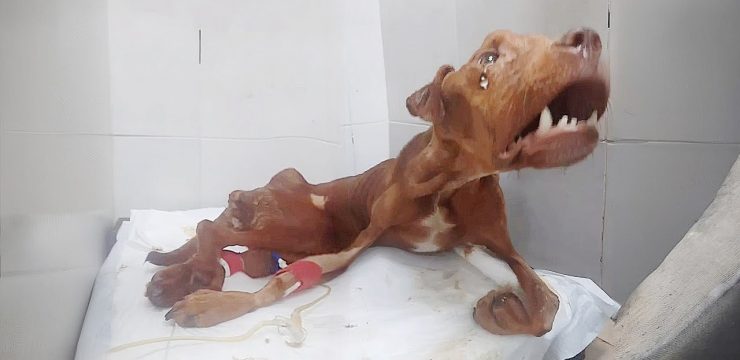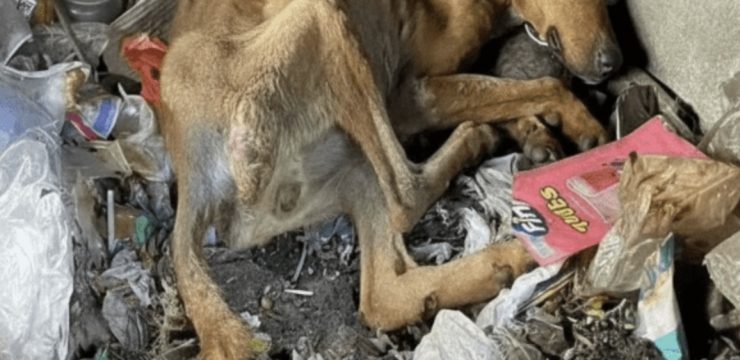In the quiet stillness of a bitter winter morning, a passerby heard the faint sound of whimpering coming from behind a small, snow-covered house. Following the noise, they found Jem — a frail, trembling dog chained tightly to a post in the freezing snow. His thin body quivered violently with every breath, his fur crusted with frost, and his eyes filled with a silent plea for mercy. It was clear that Jem had been left there for far too long, exposed to the brutal cold without food, warmth, or compassion.
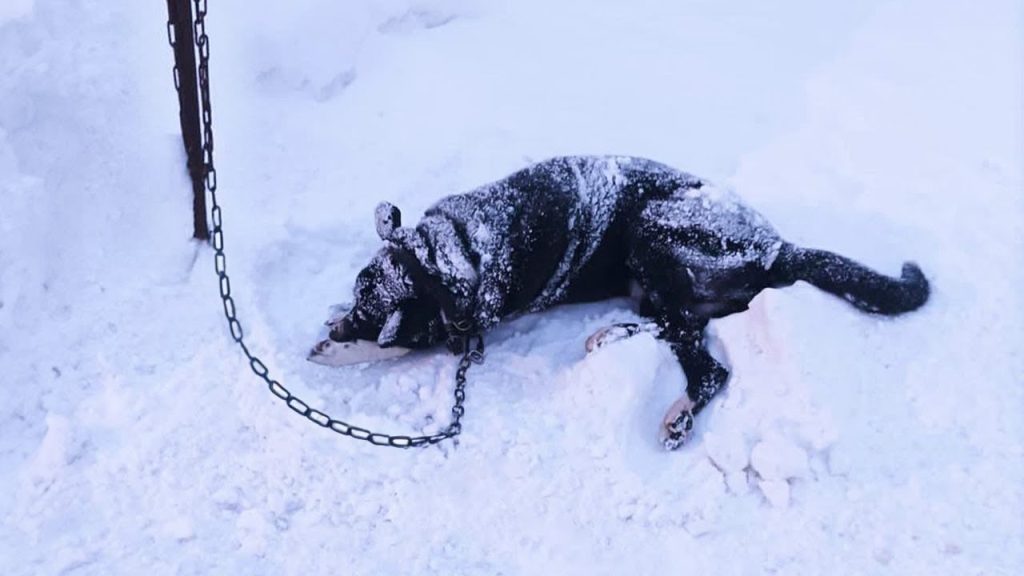
The person who found him, shaken and heartbroken, immediately approached the home’s owner and begged for an explanation, hoping this was some sort of misunderstanding. But what they heard next was beyond belief. The owner coldly replied that Jem had “made a mistake and deserved it.” Those words hung heavy in the freezing air, colder than the snow itself. The rescuer knew in that moment they couldn’t leave him there — not for another second.
Acting swiftly, they called local authorities and arranged for Jem to be taken to the nearest veterinary clinic. When they reached the vet, the medical team rushed him inside, wrapping him in warm blankets and working to raise his dangerously low body temperature. Jem’s condition was critical. He was suffering from severe hypothermia; his frail body shook uncontrollably, and even the gentlest touch caused him to tremble harder. The vet staff worked tirelessly through those tense first hours, trying to stabilize him and ease his pain.
After Jem was warm enough to undergo tests, the team performed X-rays to understand the extent of his injuries. What they discovered was nothing short of horrifying. Jem had been shot multiple times — up to four bullets were still lodged inside his small frame. One bullet lay dangerously close to his spine. Combined with a degenerative condition called spondylosis, this injury had left him completely paralyzed in his hind legs. The doctors explained that he could no longer stand or walk on his own. Every movement came with visible pain, and his body had grown so weak that they feared he might not survive through the night.
The medical team faced an impossible decision. Surgery could potentially remove the bullets, but Jem’s age and fragile state made the operation far too risky. There was a real possibility that he wouldn’t make it through the procedure. The reason behind this cruelty was as senseless as it was cruel: his owner simply “didn’t want to take care of an old dog anymore.” Jem had been abandoned, not because of what he did, but because of what he had become — a loyal friend whose years of devotion no longer seemed convenient.
Still, the rescuer refused to give up. They believed Jem’s life still mattered. They arranged to move him to a new facility that specialized in rehabilitation and long-term recovery. The car ride was long, winding through snowy roads, but Jem found rare moments of calm as he gazed out the window. For the first time in a long while, there was hope in his eyes — fragile, but real.
At the rehabilitation center, Jem began a slow and painful recovery process. Each day was a small battle. He received gentle massages to stimulate his muscles, assisted exercises to help him relearn basic movements, and endless words of encouragement from the caregivers who refused to let him give up. The progress was gradual, sometimes invisible, but every tiny improvement mattered. One day, he managed to slightly move his hind legs. Another day, he wagged his tail when his rescuer came into the room. Those were victories — quiet, beautiful moments that spoke of his courage and will to live.
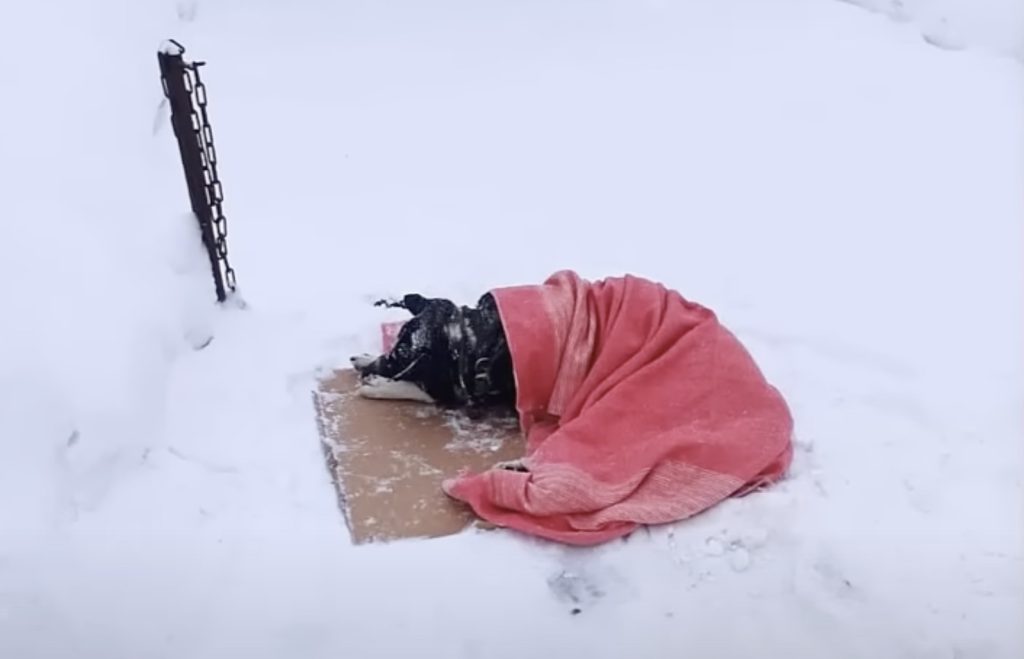
Days turned into weeks, and Jem began to transform. His once-haunted eyes softened with trust, and his spirit — though scarred — started to heal. The rescuer visited him often, spending hours by his side, reading softly to him, brushing his fur, and feeding him by hand. A bond began to grow between them — not the kind born from pity, but from deep respect and love. Jem had been broken, but not defeated. And his rescuer saw something extraordinary in him: the heart of a survivor.
Eventually, Jem’s rescuer made a decision that would change both of their lives forever. They brought him home. The house that once echoed with silence now rang with the soft sound of Jem’s paws on the floor and the gentle laughter of a young girl who quickly became his best friend. She adored him completely — hugging him, brushing his fur, whispering secrets only he could hear. In her eyes, Jem was not an old or broken dog. He was family.
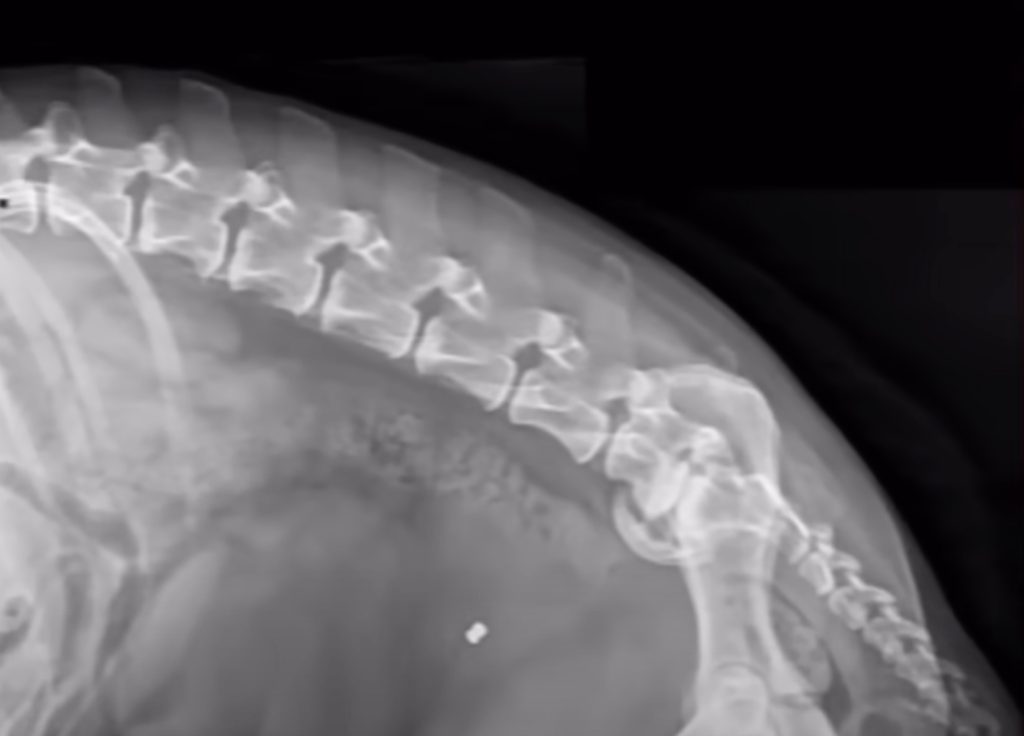
Though Jem’s legs never fully regained strength, his new life was filled with love and dignity. His family fitted him with a special wheelchair, allowing him to move freely again. Every morning, he joined them for slow walks in the garden, his wheels leaving neat tracks in the dew-covered grass. He would stop to sniff the air, lift his face toward the sun, and let the warmth touch his fur — something he once nearly lost forever.
The video that tells Jem’s story closes with a scene that captures everything he has fought for: peace, safety, and love. In it, Jem lies contentedly beside the little girl on the living-room rug, his head resting on her lap as she reads aloud. The light pouring through the window bathes them both in a soft glow, a quiet testament to the power of compassion.
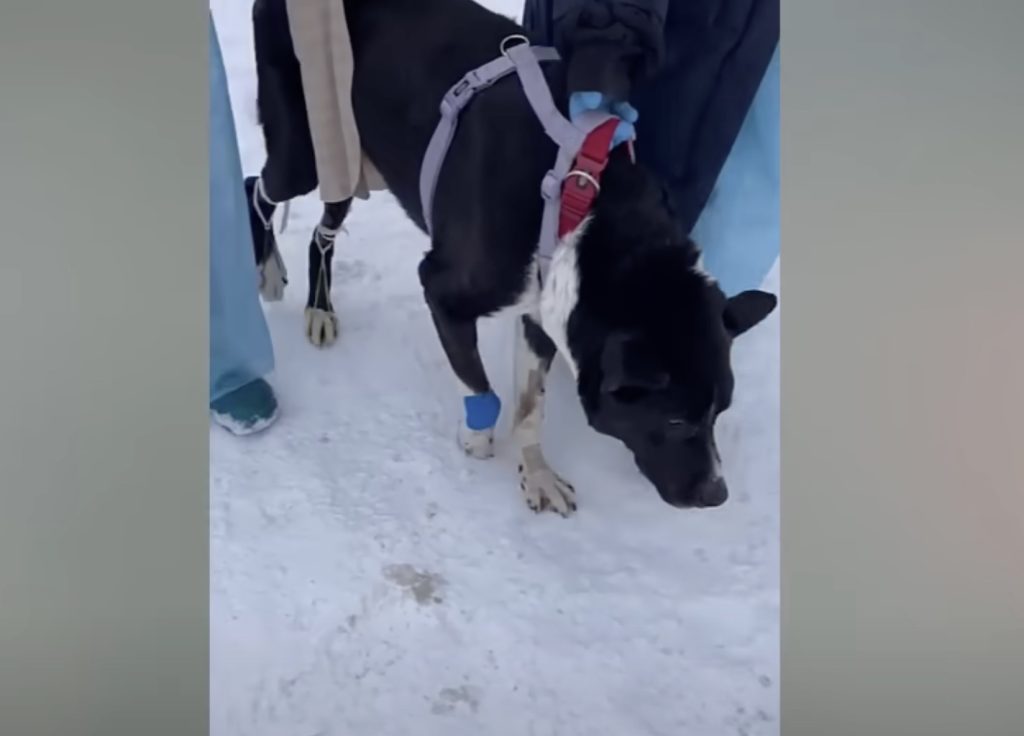
Jem’s story is not just about survival — it’s about the resilience of the spirit, the miracle of second chances, and the kindness of those who choose to care when others turn away. His life reminds us that every animal, no matter its age or condition, deserves love, respect, and a chance to live without pain.
Today, Jem is surrounded by people who cherish him for who he is. His eyes, once filled with fear, now reflect peace. He has become a symbol of hope — proof that even after the darkest winters, warmth can return, and hearts once broken can learn to trust again.
